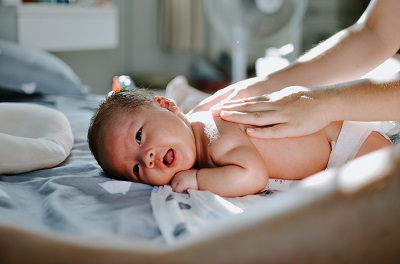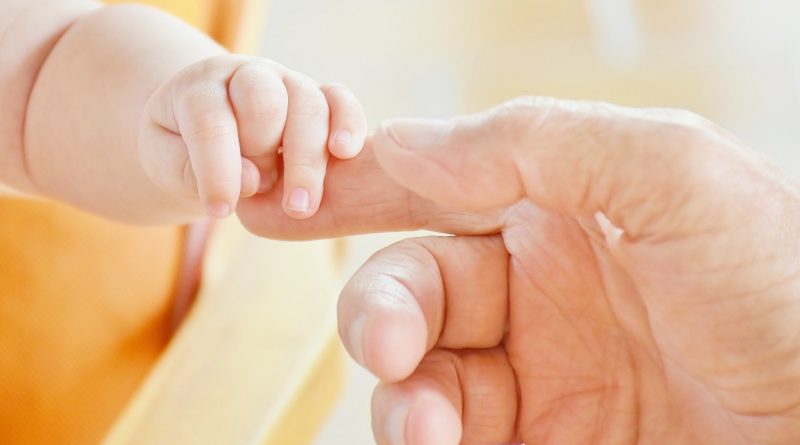Skincare for Babies: Top Tips for Sensitive Skin
Your little one’s skin is delicate. In fact, it is 30% thinner than adult skin, according to a study published in Pediatric Dermatology. This makes baby skin more permeable and allows substances to pass through it more easily. And, while this can make it much easier for your baby’s skin to absorb moisture, it also makes it more difficult to retain it, which is why babies are more prone to dryness.
To keep your little one’s skin healthy, it’s important to take care of it every day. With regular bathing and moisturising, you can keep your baby feeling soft and cuddly. Looking after their skin isn’t just great for their health, either. Spending lots of time getting skin-to-skin contact can help you form a strong bond that will last a lifetime.
Below, I’ll be going through my top tips for taking care of your little one’s sensitive skin, as well as how you can get more skin-to-skin contact, so you can enjoy some quality time with your little bundle of joy.
Protect their skin with baby-safe products
As your baby’s skin is much thinner than your own, it is also much more sensitive to harsh products. To take care of their skin in the right way, it’s important to choose products that have been specially formulated and assessed to make sure they are safe to use on infant skin.
 When your baby is born, the natural pH level of their skin is around neutral. As we age, our skin naturally gets more acidic, which means adult skincare products have been formulated for more acidic skin. To take care of your baby’s natural pH level, avoid products that contain antibacterial soaps, ethanol, or ethyl alcohol, which could disrupt their pH balance and cause irritation.
When your baby is born, the natural pH level of their skin is around neutral. As we age, our skin naturally gets more acidic, which means adult skincare products have been formulated for more acidic skin. To take care of your baby’s natural pH level, avoid products that contain antibacterial soaps, ethanol, or ethyl alcohol, which could disrupt their pH balance and cause irritation.
It’s also important to remember that your baby’s skin is more sensitive to UV rays. If you can, keep them in the shade or indoors between 11am and 3pm when the sun is strongest. It’s also a good idea to cover up their skin with clothing, a hat, and sunglasses. I’d only recommend using sunscreen on children over six months.
Deal with common skin issues
You might notice signs of redness or irritation on your little one’s skin, and this is often nothing to worry about. You can usually treat them yourself at home, and my advice below will help you deal with the most common skin problems for babies. However, if you’re ever concerned, it’s a good idea to speak to your doctor.
Dryness
As your baby’s skin is thinner than an adult’s, it’s a little harder for it to retain water, which means it can be prone to dryness. Applying a baby-safe moisturiser regularly should help. It’s also a good idea to apply moisturiser while their skin is still damp from the bath, which will help them retain more of the moisture.
Eczema
Eczema will show up on your baby’s skin as an itchy, red rash. If your little one has eczema, you can usually treat it by applying a moisturiser frequently and avoiding fragranced products. It’s also a good idea to give them anti-scratch mittens. However, be sure to speak to your doctor if it doesn’t clear up.
Nappy rash
Nappy rash usually occurs as a result of too much moisture and not enough air around your baby’s bottom. Leaving your baby’s nappy off for around 10 minutes during changing time can help, as well as applying a soothing nappy balm.
Heat rash
As your little one’s skin is thinner than an adult’s, it isn’t as good at regulating heat. This means it can be prone to heat rash, which is a red rash that occurs in areas that tend to overheat and sweat. These areas can include under the armpits, in the creases of their elbows, and behind their knees. Heat rash will usually go away on its own if you dress your little one in loose fitting clothing and keep them cool.
Baby acne
Baby acne is similar to adult acne and can occur for the same reasons. The best way to treat it is to leave it alone and only wash the area with plain water until it clears up. However, if you’re ever concerned, be sure to speak to your doctor.
Massage your little one
 Getting regular skin-to-skin contact with your little one can be a lovely bonding experience for you both. Bathing them regularly and taking care of their skin is a great way to do this. You could also try a baby massage.
Getting regular skin-to-skin contact with your little one can be a lovely bonding experience for you both. Bathing them regularly and taking care of their skin is a great way to do this. You could also try a baby massage.
Just 15 minutes of massage therapy a day can help to reduce stress, according to research published in Infant Behaviour & Development. If you choose a baby-safe massage oil with a naturally calming scent such as lavender or chamomile, you can boost the relaxing benefits for you both. Try to look for products containing vegetable oils too, such as sunflower oil, which can help protect the natural moisture barrier of your baby’s skin.
It’s a good idea to massage your baby when they’re quiet and calm and pay attention to their mood throughout the massage. Start at their feet, ankles, and legs before moving onto their torso and arms. If your little one shows any sign of discomfort, stop the massage and try again another day.
If your baby isn’t a fan of massages but you’d still like to get this bonding time, you could try laying them across your chest for a little while after bath time. Not only is this another great way to bond, but it can also help support breastfeeding and encourage your little one to feed.
By regularly taking care of your little one’s skin and enjoying some cuddles, you can form a strong bond with your baby that will last a lifetime. If you follow my tips above, you’ll be well prepared to enjoy your new role as mum or dad. And remember, if you ever have any concerns, it’s important to speak to your doctor.







